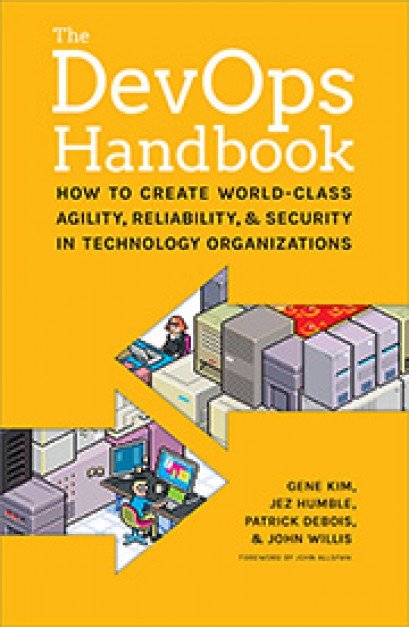22 May 2023

Organisations have increasingly embraced multicloud environments, with 87% of them leveraging multiple cloud providers to capitalise on the unique strengths of each platform and product, as reported in the 2023 Flexera State of the Cloud Report. As cloud adoption continues to rise, it becomes increasingly critical for organisations to choose the right services and adopt the best practices to optimise their investments. Managing cloud spend has become the top challenge in recent years, with 62% of organisations listing cost optimisation as their primary initiative. This shift in priorities underscores the importance of a well-planned and executed multicloud strategy, where DevOps plays a significant role in streamlining processes and ensuring efficiency.
While multicloud adoption offers numerous benefits, such as enhanced flexibility, improved performance, and reduced vendor dependency, organisations must navigate the complexities of managing multiple platforms to ensure success. By incorporating DevOps methodologies and understanding the do's and don'ts of multicloud strategies, organisations can maximise their investments and harness the full potential of their multicloud environments. The collaboration between development and operations teams in a DevOps framework allows for the seamless integration of services. It ensures that the developer and admin experience remains a priority, leading to increased productivity and faster innovation.
Organisations choose multicloud strategies for various reasons, such as enhancing flexibility, improving performance, and reducing vendor dependency. However, it is crucial to understand how to make the most out of your multicloud environment to avoid potential pitfalls.
Here are eight do's and don'ts that can guide you toward a more effective multicloud strategy:
While numerous compelling reasons exist to adopt a multicloud strategy, steering clear of vendor lock-in shouldn't be the only driving force. In reality, various aspects of your technology stack, such as programming languages, CRM systems, open-source databases, proprietary hypervisors, and public clouds, inevitably impose some lock-in. Changing them overnight is impossible, as your organisation has established processes, skills, and integrations for each component.
Instead of avoiding lock-in altogether, focus on minimising the impact of being tied to inflexible or slow-evolving elements within your architecture—Utilise standard components when it's practical and adopt specialised ones when they enhance your business outcomes. Refrain from treating public clouds as generic infrastructure pools; doing so could undermine the efficiency, cost savings, and agility you seek.
When selecting multicloud services, evaluating factors such as production, runtime, operations, data management, identity, and security is crucial. These aspects significantly shape your overall multicloud strategy and ensure your chosen services align with your organisation's objectives.
Complete multicloud solutions are typically unattainable, as the perfect combination of services for every need is rare. Instead, focus on identifying and integrating services that best address your business requirements and work together to create a cohesive multicloud environment.
Establishing strategic anchors is crucial for maintaining stability and consistency throughout your multicloud environment. These anchors comprise essential technologies, platforms, or methodologies that persist consistently, irrespective of the cloud provider.
By identifying and implementing these strategic anchors, your organisation can create a unified framework that simplifies management, enhances interoperability, and promotes seamless integration of various cloud services, ultimately contributing to a more efficient and effective multicloud strategy.
Steer clear of constructing applications using an arbitrary mix of services from different cloud providers. Such a haphazard approach can increase complexity and potential compatibility issues, hindering application stability and maintainability.
Instead, focus on selecting services that complement each other and prioritise seamless integration and compatibility. This approach will result in a more coherent, stable, and manageable application, ultimately enhancing your organisation's multicloud strategy.
Choosing an appropriate adoption journey is essential for tailoring your multicloud strategy to your organisation's requirements. Among the various options available, consider the following five everyday adoption journeys:
1. Cap and Grow: This approach involves capping your existing infrastructure investments while growing your cloud presence to accommodate new projects or workloads, effectively balancing legacy systems and cloud-native services.
2. Extend the Foundation: You build upon your existing infrastructure by extending it to multiple cloud providers, enabling a more flexible and scalable environment that caters to evolving business needs.
3. Parallel Paths: In this journey, you develop and maintain separate cloud environments for specific purposes, such as development, testing, and production, allowing for better management and control of each environment.
4. Selective Services: This strategy involves adopting specific services from various cloud providers to create a customised solution that addresses your organisation's unique needs without committing fully to a single provider.
5. Isolation for Regional/Compliance Needs: With this approach, you establish isolated cloud environments to meet regional or compliance requirements, ensuring that sensitive data and applications are adequately protected and adhere to local regulations.
By selecting the most suitable adoption journey, you can optimise your multicloud strategy, align it with your organisation's objectives, and better navigate the complexities of managing multiple cloud platforms.
Prioritising the developer and admin experience is crucial when crafting your multicloud strategy. Providing an easy-to-use and consistent environment across multiple cloud platforms is critical to unlocking the full potential of your team.
A well-designed multicloud environment streamlines workflows and reduces the learning curve for developers and administrators, enabling them to focus on delivering innovative solutions and enhancing productivity. By emphasising a user-friendly and harmonious experience, you can foster greater collaboration, agility, and efficiency within your organisation, ultimately driving business growth and success.
Allocating resources to develop transferable skills and practices across various cloud platforms is vital to a successful multicloud strategy. By equipping your team with versatile expertise, your organisation gains the resilience to adapt to changes in the cloud landscape and stay ahead of the curve.
Emphasising portable skills and adaptable practices allows your team to navigate diverse cloud environments easily, minimising disruptions and maintaining productivity even as new technologies and platforms emerge. This forward-thinking approach positions your organisation for long-term success, ensuring it remains agile and competitive in the fast-paced world of cloud computing.
As a prominent German stock exchange, Börse Stuttgart was determined to enhance its operational efficiency by implementing a multicloud approach. Collaborating with VMware, the organisation aimed to optimise its IT hybrid cloud operations in alignment with its cloud-first business strategy.
Initiating the process in 2019, Börse Stuttgart transitioned administrative data to the public cloud while maintaining highly regulated trading data on-premises. This tactic enabled the stock exchange to consistently manage and apply the same tools, workflows, and policies across their data centre and cloud environments.
VMware vRealize Operations Cloud aids Börse Stuttgart in improving service monitoring and visibility, leading to faster troubleshooting. The organisation also focuses on automating capacity and cost management during uncertain times to allocate valuable IT resources towards innovation.
● Enhance agility by minimising IT staff time dedicated to manual maintenance and upgrade management.
● Accelerate vulnerability detection and updates to strengthen security
● Establish a hybrid environment with on-premises trading data and administrative data in the public cloud
● Offer visibility via management dashboards, showcasing cost and compute contention issues
● Implement cost management (chargeback/showback) to refine further IT resource allocation
● Expand capacity visibility as teams adapt to remote work during the COVID-19 crisis
● Reallocated 3-10 hours of IT time monthly from IT Operations to innovation
● Enabled automatic hardware and software scaling on-demandDelegated hardware procurement, setup, and maintenance to VMware
● Streamlined IT management with minimal time required to establish the cloud proxy for seamless operations
● Boosted responsiveness via management reports and dashboards
● Provided instant support for remote work through capacity optimisation
This case study showcases the advantages of a thoughtfully planned multicloud strategy, emphasising how Börse Stuttgart elevated operational efficiency, security, and agility by adopting a hybrid cloud model.
The Flexera 2023 State of the Cloud Report offers valuable insights into the current trends and challenges in the cloud industry. Some key findings, supported by statistics, include:
● Managing cloud spend has overtaken security as the top challenge, with 62% of respondents listing cost optimisation as their top initiative.
● Organisations continue to embrace multicloud environments, with 87% reporting multicloud usage, while single public cloud usage has increased to 11%.
● Large enterprises prioritise FinOps tools over security tools, with 68% using multicloud FinOps tools and 63% using multicloud security tools.
● Siloed apps and disaster recovery (DR)/failover are the top multicloud implementations, while intelligent workload placement has increased by 20% yearly.
● AWS and Azure continue to lead overall cloud adoption, with AWS being used by 47% of respondents for significant workloads and Azure by 41%.
● AWS dominates SMB public cloud adoption, with 71% of SMBs using AWS and 51% using Azure. Google Cloud Platform usage among SMBs decreased from 43% to 28% year over year.
● AI and ML experimentation is on the rise, with data warehouse being the most commonly used PaaS offering, followed by DBaaS (relational).
● Economic uncertainty drives increased cloud usage and spending, with 45% of respondents stating it would have little impact on cloud spending, while 10% said they would lower it.
Understanding these statistics can help organisations refine their multicloud strategies, address challenges, and stay informed about the evolving cloud landscape.
Adopting a multicloud strategy can offer numerous benefits to organisations. However, it is essential to consider the right services, practices and approaches to maximise the potential of each platform. By following the do's and don'ts outlined above and staying updated with industry trends, your organisation can build a thriving multicloud environment that caters to your unique business requirements.
● Adopt multicloud for the unique strengths of each provider, not just to prevent vendor lock-in.
● Build an open-source foundation for flexibility and interoperability.
● Choose services tailored to your business needs instead of expecting complete multicloud solutions.
● Select strategic anchors to provide stability and consistency across your multicloud environment.
● Avoid creating applications with a random assortment of services, focusing on seamless integration and compatibility.
● Choose an appropriate adoption journey based on your organisation's requirements.
● Prioritise developer and admin experience for increased productivity and innovation.
● Invest in transferable skills and practices to remain adaptable in the ever-changing cloud landscape.
● Stay informed of industry trends and challenges to align your multicloud strategy with the evolving market.
By keeping these key takeaways in mind, your organisation can effectively navigate the complexities of a multicloud environment and harness its full potential for growth and success.

